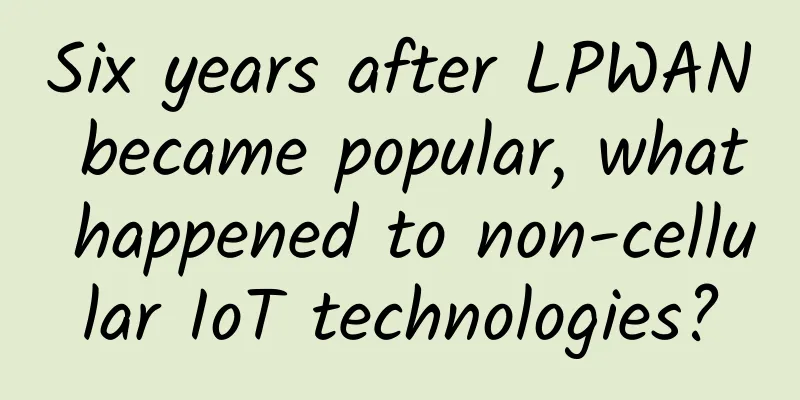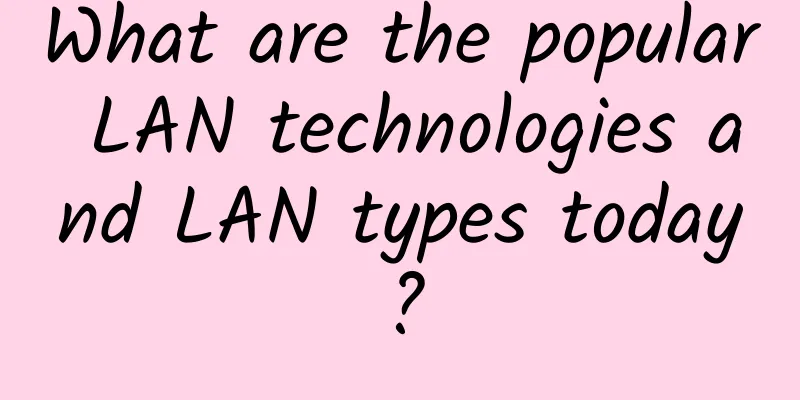Six years after LPWAN became popular, what happened to non-cellular IoT technologies?

|
If you have to ask when LPWAN entered the public eye, it was probably in 2016. At that time, Sigfox, a startup born in the suburbs of Toulouse, France, came into people's view. It formulated an ambitious plan to build a global network dedicated to the Internet of Things that runs parallel to the LTE network. In the past few years, it has tried to enter the Chinese market many times, but it has not been successful. At the same time, Ingenu, an American company that seemed to have superb technology, a strong team, rich development experience and a complete enterprise chain, planned to seize China's LPWAN market with its RPMA technology and planned to expand the IoT infrastructure to the whole of China based in Wuxi. After struggling for a few years, it finally did not make much splash in the domestic market. In addition, six years ago, Symphony Link, Weightless-N, Weightless-W, Weightless-P, NWave, Telensa, Platanus, Cynet and other technologies also came into our sight from time to time. However, these technologies ultimately failed to leave impressive achievements in the Chinese market. The LPWAN world is unbreakableNon-cellular IoT connectivity technology for Flowing Water?In the world of LPWAN, we are accustomed to dividing the technologies into cellular technology and non-cellular technology. To some extent, the development of cellular LPWAN technology is relatively clear. Once upon a time, NB-IoT and eMTC were regarded as two very important growth poles in the Chinese LPWAN market. However, after several years of development, operators have changed their development direction and abandoned the development of eMTC. In the end, eMTC lost the possibility of development in this domestic market. Of course, while developing NB-IoT, LTE Cat.1 is also being vigorously developed to meet some market demand. When it comes to non-cellular technologies, these technologies can largely solve the problem of large-scale and wide-coverage network connection for IoT applications, make up for the shortcomings of traditional cellular technologies, and further promote the application and large-scale deployment of the IoT. After years of observation, this part of the market has relatively large changes. As mentioned above, some technologies have been eliminated by the market due to their lack of fit with market development, while some technologies, such as LoRa, ZETA, ADC, and interBow, have achieved positive development. The technology is constantly being updated and optimized, and the application continues to expand to more vertical fields. The industrial ecology is gradually expanding. Of course, there are also new technologies that are spawned by market demand, such as WIoTa, TPUNB, ChirpIoT™, TurMass™, and LaKi. A sentence or paragraph to understand the top ten non-cellular low-power long-distance communication technologiesIn the non-cellular low-power long-distance IoT technology market, perhaps because the "old technology" market is maturing, everyone is focusing on practical work, while the "new technology" is still in its early stages of development and is in the process of expanding its market awareness. As a bystander of the non-cellular low-power long-distance IoT industry, I have a personal feeling that the industry's enthusiasm for this type of technology seems to have receded slightly in the past year. But is this really the case? Perhaps we need to have a deeper understanding of the overall development of this industry before we can draw a conclusion. Before that, perhaps we can first understand these new and old technologies through a sentence (paragraph): LoRa: After several years of development, LoRa technology has established its position in the field of low-power, long-distance IoT technology, and has been recognized by the industry at the communication level. From the perspective of the global market, LoRa's overseas market development is gradually rising, and the market focus is shifting. From the perspective of the industrial chain, companies in the industrial chain continue to strengthen their layout of the entire industrial chain, and the division of labor in the industrial links is no longer so clear. A LoRa company can assume multiple roles at the same time and provide a variety of products and services. From the perspective of application areas, innovative applications continue to emerge, and have expanded from the initial low-value service model based on objects to high-value services centered on human needs, and then gradually reversely penetrated into the model of objects. ZETA: ZETA has been recognized by the market because its power consumption and cost are highly consistent with the needs of supply chain logistics, low-value asset management and other industries. Especially in the field of logistics visualization tracking, such as the large-ticket LTL market, ZETA has a large room for business expansion. At present, in the fields of energy, smart cities, water conservancy and industry, power grids, etc., ZETA's wide area networking is also a good domestic alternative. WIoTa: WIoTa is a communication protocol optimized for wide-area wireless IoT communications. Its core is to provide deep optimization for large coverage, low power consumption, large number of connections, and low-cost applications. At present, WIoTa To B application scenarios include smart farming, smart meters, smart agriculture, smart energy, environmental monitoring, industrial Internet of Things DTU, etc.; To C application scenarios include smart home, smart wearables, voice intercom, etc.
|
<<: Signaling analysis: Why did KDDI's major outage last for 60 hours?
>>: Connecting the industrial ecosystem, 5G accelerates the empowerment of thousands of industries
Recommend
The number of 5G package users far exceeds the number of 5G mobile phone users. Are you infected by 5G?
If we distinguish by telecommunications scale, th...
2022 UBBF|Huawei's optical transmission demonstration site is on display
[Bangkok, Thailand, October 28, 2022] From Octobe...
What systems does weak current system integration mainly include?
1. Computer Network System Engineering In intelli...
To promote the migration of 2G/3G to NB-IoT/Cat1, the Ministry of Industry and Information Technology released the first important document on the Internet of Things in 2020!
Yesterday, the General Office of the Ministry of ...
Liu Pingyang of Youpaiyun: The whole industry releases the charm of CDN and the live broadcast market accelerates again
[51CTO.com original article] The interview with L...
Take you to quickly understand: leaky bucket and token bucket algorithm in current limiting
[[346652]] This article is reprinted from the WeC...
Why is NFV spreading so rapidly under the 5G trend?
5G's high bandwidth, low latency, and large c...
My HTTP/1.1 is so slow! What can I do?
[[383004]] This article is reprinted from the WeC...
Global Power over Ethernet Lighting Solutions
The world of smart buildings is undergoing a majo...
Telling the story of HTTPS
Starring in the story: Xiaohua is a freshman this...
Here are 24 C++ pitfalls to avoid.
[[396092]] This article is reprinted from the WeC...
25 years later, the CDMA legend ends
On June 12, South Korea's Ministry of Science...
Unveiling the "veil" of smart courts, the old look is transformed by 5G applications
In a society ruled by law, it is normal to go to ...
Wi-Fi 5 is being phased out, while Wi-Fi 6 is experiencing an explosion: its share is growing
[[388418]] Today, IDC released the "China WL...
Top 10 Web Trends: How to Stay Ahead in 2021
[[422976]] 【51CTO.com Quick Translation】 Due to t...









